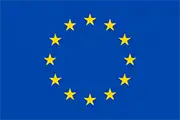Product Discovery
The first step, crucial to the success of the project, is the discovery phase. At this stage, a coherent vision of the project is created and a path for its development is defined.
The product discovery phase is primarily about:
- understanding the vision and goals of the project;
- predicting business outcomes;
- identifying the most relevant functions;
- creating a list of goals set for the MVP.
The key of the product discovery phase is to understand the goals of the project and its impact on the organization. From the very beginning, we pay the most attention to understanding your product's operating space. The result of our six-step product discovery process is documentation that allows you to move directly to the kick-off and implementation phase of the project.
Stage I – Alignment
The start of product discovery is the ideal time to establish a cohesive project team. Developing a product concept requires collaboration from a diverse and skilled team.
The flow of information and the joint passage of the entire process through the team ensures the creation of consistent project documentation. This will ensure that the goals and priorities of each department are taken into consideration.
The matching stage is also the moment of:
- working out the channels and forms of communication,
- determining the level of involvement of individual people,
- creation of a draft work schedule.
Duration of the stage: 1 week.
Result of work: Product Discovery Roadmap, influence, and uncertainty matrix.
Stage II – Research
The research stage of product discovery can vary depending on the company's current knowledge, the industry, and the goals we want to achieve. Our approach to this process is based on a combination of internally gathered knowledge and external research.
The discovery team does not aim to conduct full-scale research, but only to select sources and analyze the collected data. In some cases, we add a specialized research team to the permanent team for more detailed information.
At the research stage:
- we map the structure of problems and their priorities,
- we identify user attributes related to goal achievement,
- we create a structure of user behaviors worth analyzing.
Duration of the stage: 2–5 weeks.
Work result: A set of user and environment analyzes, precisely defined OKRs, business requirements documentation.
Stage III – Ideation
The ideation process is the first step on the product discovery path to finding solutions. As part of this stage, we conduct exercises to create ideas to solve the problems described earlier. In our analysis of the ideas, we look back at the impact mapping we have already created and consider what solutions might be best for our customers.
The goal of this stage is to identify and gradually fill in the list of solutions through structured ideation. It is important to involve different people in the process to avoid biases and directional thinking.
The ideation process consists of 6 stages: frame, explore, diverge, stretch, refine and review. A process created in this way makes it easy to see what stage you are currently at and what is needed to complete ideation.
Ideation is primarily:
- workshops and more than 90 exercises to support the development of ideas and ideation,
- creation process.
Duration of the stage: 2–3 weeks.
The result of the work: Business Requirements Documentation (BRD).
Stage IV – Creation
The creation stage is the time on the product discovery path when ideas for solutions to business problems are structured and described in a way that illustrates the application's functions. An image of the complete application we visualize in the form of a canvas.
The most important goal of this stage is to convert the list of solutions into a canvas of functions and applications of the finished product. This happens through a series of experiments and exercises, through which we put the described functions on an impact mapping board.
During the creation stage:
- we work creatively during experiments and exercises,
- we find the functions, their impacts and define the expected results,
- we create a canvas of functions and expected results.
Duration of the stage: 1–2 weeks.
Result of work: Canvas of application, Impact Map.
Stage V – Validation
All created concepts, solutions, and functions need to be validated to meet business expectations. At this stage, we involve a wider group of experts to review and confront the existing concept. This ensures that the created application will be the best version available.
The validation stage is intertwined with the creation stage. Based on the described comments and tips, there is a return and re-creation. After several such iterations, we are ready to present the finished functional description.
Validation involves:
- a wider range of people from various business and technical domains,
- testing ideas and challenging expectations,
- returning to the creation stage and developing functional documentation.
Duration of the stage: 1–2 weeks.
Result of work: Functional Requirements Documentation (FRD).
Stage VI – Refinement
The refinement stage is the final cut on the product discovery path. During this time, the focus is on prioritizing tasks and distributing pressure to execute each function.
In the scope of the refinement stage, there is a breakdown of priorities, key functions, steps for their creation and implementation, and an MVP backlog.
This makes the product ready for the Kick-off phase, which starts the application development process.
Refinement is:
- defining and determining the final shape of the features,
- defining priorities and pressure points,
- MVP and description of the next phases of the project,
- creation of a backlog.
Duration of the stage: 1 week.
Work result: The project documentation.


